In this part of the report we detail all the tests and checks to which the Oxygen Sensors are subjected before reaching the market, as well as the symptoms of failure and their causes.
1. Test and trials
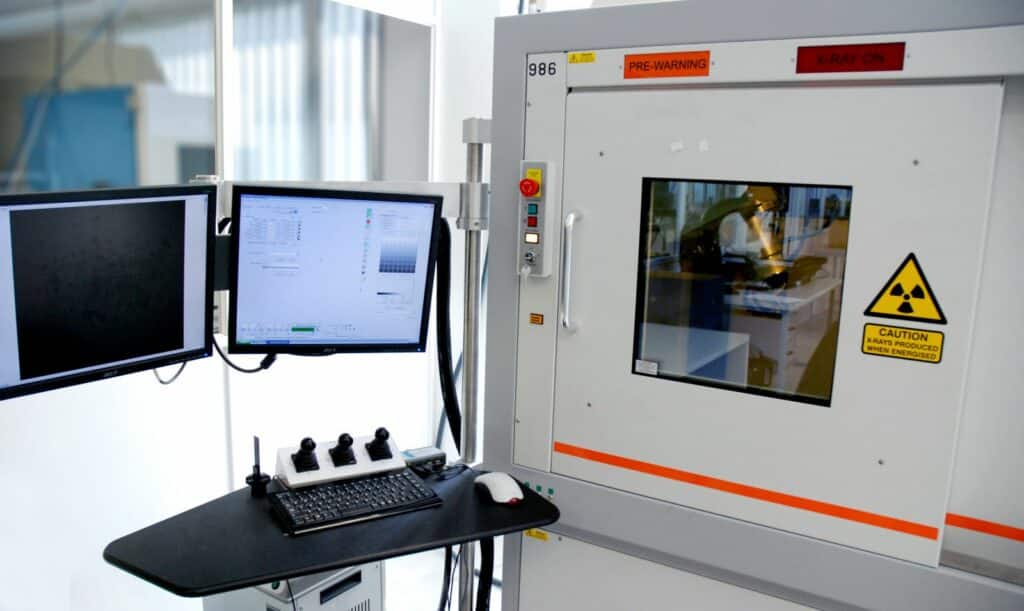
FAE works under the premise of offering high-quality OEM-level (Original Equipment Manufacturer) products with regard to performance, resistance, durability, reliability and compatibility.
The products are in a constant state of technological evolution and always undergo severe testing before being certified for sale. The aim of these tests is to subject the part to the normal conditions of use in a vehicle, in order to check its standard of operation. Then, afterwards, the part is taken to its limit to test its resistance level under very extreme conditions.
It is thanks to these tests that FAE is able to achieve such a high quality, which is recognised worldwide in over 100 countries. We also adapt the different trials to the needs of each client.
The FAE testing methods are divided into two types:
Investigation and Analysis
These are the testing methods that are performed during the design and development of the part:
- 3D measurement system
- X-ray machine with tomography module
- Electronic microscope with x30,000 magnification
- DSC/TGA inspection system (Differential Scanning Calorimetry)
- High temperature microscope and dilatometer
Testing and Trials
These are the testing methods which are performed on the finished parts.
- 4 climatic chambers from 200ºC to -50ºC
- Thermal shock chamber from +180ºC to -70ºC
- 2 Vibration test machines (one with random test trial)
- 1 salt spray and corrosion chamber
- Duration test benches for all FAE products
We group the different tests into 5 main groups. All our tests are done according to the different standards set out by the International Organisation for Standardisation.
Durability test
- Life Test: The part is operated during many work cycles (from thousands to millions of cycles, depending on the part).
- Maximum Working Temperature: The part is made to work for a time subjected to its maximum working temperature.
Electrical test
- EMC (Electromagnetic Compatibility) Emissions: This measures the electromagnetic compatibility of the analysed part. EMC Emissions: This measures the electromagnetic compatibility of the analysed part.
Duration test
- Vibration Test: The part is subjected to various types (sine and random) and intensities of vibration to check its resistance to them.
- Climatic Test: The part is subjected to different temperatures for a stipulated time.
- Free Fall Test: The part is dropped from a height of 1m.
- Mechanical Shock Test: The part is subjected to a severe blow, to check its resistance.
- Thermal Shock Test: The part is passed from a very low temperature (-50°C) to a very high temperature (200°C) in a very short space of time, and then vice versa.
- Water Resistance and Hermeticity Test: The watertightness of the part is checked.
- Salt Spray Test: This is used to measure the resistance of the part and its metal components in corrosive atmospheres.
Chemical Resistance test
- Chemical Resistance Test: The part is immersed in different chemical solutions for a long period of time to calculate its resistance to external chemical agents.
- UV Rays Test: The part is subjected to the same conditions as if it were exposed to the sun for a long time.
Wiring and connectors test
- Break Strength Test: The wire is stretched with a particular force to check its resistance.
- Insulation and Connector Integrity Test: Various tests are carried out to ensure that the connector and connections are functioning well and have good insulation.
With the great and continuous evolution of combustion engine vehicles, Oxygen sensors have become an electronic product with a high level of technology and development. Let us consider, too, that in the not too distant future, all appliances and machinery that work by combustion will have to keep track of their polluting emissions and will need an oxygen control probe. For this reason, FAE continues to consistently invest in innovation and product development, in order to bring our technology and quality to the largest number of clients.
2. REPLACEMENT OF THE OXIGEN SENSOR
Vehicle manufacturers recommend a Lambda Probe check every 30,000km. with a mandatory replacement every 160,000km. (depending on the manufacturer), but the Oxygen Sensor will have to be changed if any of the following symptoms of a fault appear:
Excess fuel consumption
Elevated pollutant emissions
Check Engine warning light on.
3. SYMPTOMS OF FAILURE OF THE OXYGEN SENSOR
We should pay attention to the state of the protector which has been in direct contact with the exhaust gases. We can determine the cause of the failure according to its appearance.
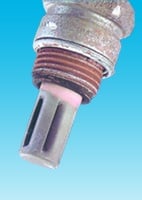
Oxygen sensor damaged by an excess of lead in gas emissions.
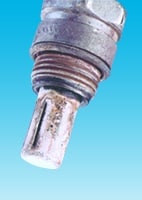
Oxigen sensor damaged by antifreeze contamination.
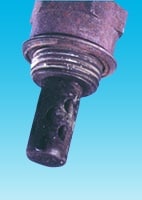
Oxigen sensor damaged by an excessively rich air-fuel mixture.
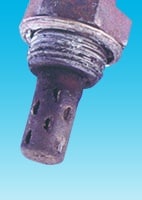
Oxigen sensor damaged by high oil consumption.
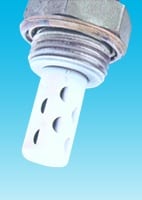
Oxigen sensor damaged by silicon contamination of gas emissions.
In addition, the connector and the wire must be checked to make sure they’re in good condition. Also check whether the body of the oxigen sensor shows any bump or crack. We should pay attention to the state of the protector which has been in direct contact with the exhaust gases. We can determine the cause of the failure according to its appearance. Whenever you encounter any of these situations, you should replace the oxigen sensor and ascertain why the fault occurred in order to fix it.
It’s important that the nut of the oxigen sensor is soaked in grease which is resistant to high temperatures. This way, you avoid it getting welded to the socket exhaust and not being able to remove it. FAE probes come coated in this special grease.
Before installing the Oxigen Sensor, make sure you’re using the appropriate reference for your vehicle.
With an Oxigen Sensor in good condition, you will benefit from the followings:
- Less pollution.
- Better functioning and performance of the engine.
- Lower fuel consumption (Oxigen Sensor in poor condition can cause up to 15% increase in consumption).
- Not damaging the catalytic converter






